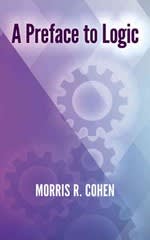Question
Assume that adults have IQ scores that are normally distributed with a mean of 104.5 and a standard deviation of 17.2. Find the probability that
Assume that adults have IQ scores that are normally distributed with a mean of 104.5 and a standard deviation of 17.2. Find the probability that a randomly selected adult has an IQ greater than 135.1. (Hint: Draw a graph.) Part 1 The probability that a randomly selected adult from this group has an IQ greater than 135.1 is enter your response here. (Round to four decimal places as needed.)
This an example of what I am looking for:
Assume that adults have IQ scores that are normally distributed with a mean of and a standard deviation of . Find the probability that a randomly selected adult has an IQ greater than . (Hint: Draw a graph.) Question content area bottom Part 1 To help visualize the area of interest, draw a standard normal curve. Label the given values for x and x
A symmetric bell-shaped curve is plotted over a horizontal x-axis. Two vertical lines extend from labeled coordinates on the axis to the curve. One vertical line extends from the coordinate labeled 94, which is located at the center and peak of the curve. The other vertical line extends from the coordinate labeled 107.1, which is to the right of the center and peak of the curve. Part 2 Now shade the region representing the desired probability. In this case, the desired probability is the probability that a randomly selected adult has an IQ greater than , as shown. x
A symmetric bell-shaped curve is plotted over a horizontal x-axis. Two vertical lines extend from labeled coordinates on the axis to the curve. One vertical line extends from the coordinate labeled 94, which is located at the center and peak of the curve. The other vertical line extends from the coordinate labeled 107.1, which is to the right of the center and peak of the curve. The area under the curve to the right of 107.1 is shaded. Part 3 For each relevant value x that is a boundary for the shaded region, use the formula below to convert that value to the equivalent z-score, where is the mean and is the standard deviation. z Part 4 First identify the values of x, , and . x Part 5 Find the corresponding z-score for x, , and , rounding to two decimal places. z Substitute. Simplify. Part 6 While either technology or a standard normal distribution table can be used to find the cumulative area to the right of , for this problem use technology, rounding to four decimal places. Note that with many technologies, the x-value can be found directly. The area to the right of is . Part 7 Thus, the probability that a randomly selected adult has an IQ greater than is .
Step by Step Solution
There are 3 Steps involved in it
Step: 1

Get Instant Access to Expert-Tailored Solutions
See step-by-step solutions with expert insights and AI powered tools for academic success
Step: 2

Step: 3

Ace Your Homework with AI
Get the answers you need in no time with our AI-driven, step-by-step assistance
Get Started


